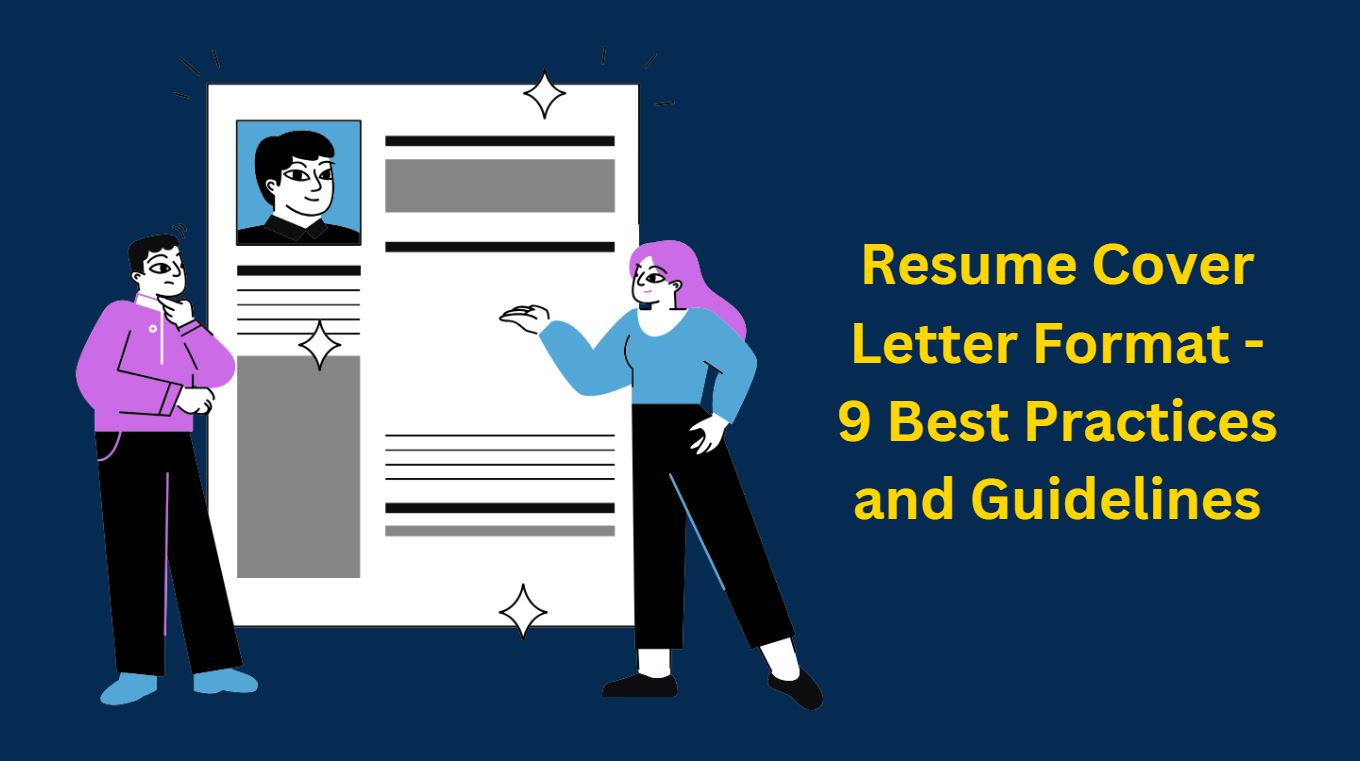Resume Cover Letter Format – 9 Best Practices and Guidelines

If you are looking for the new job then cover letter along with your resume is must. You need to look into resume cover letter format also where customized introduction and emphasized qualifications in a well-written manner are needed which can greatly improve your job application. Your CV or resume is not the only document that matters but importance of cover letter can’t be ignored when looking for a new job. Earlier you learnt resume quality checker which helps in creating CVs as per the industry standards. While maintaining a professional resume cover letter format is crucial if you want to leave a good impression on prospective employers. I’ll go over the best practices and rules for organizing a resume and cover letter in this post so that you can impress the hiring managers.
Resume Cover Letter Format and Guidelines
1. Header Section
Your contact details, including your full name, city, state, ZIP code, phone number, email address, and, if you’d like, a link to your professional website or LinkedIn page, may be included in this part. You should make sure your contact information is up to date, professional, and corresponds with your resume.
2. Recipient’s Contact Information
Below the date in this area, you should have the hiring manager’s contact information in the format of a business letter. Your resume and letter should be addressed to the name of the person or interviewer who asked about it. If you don’t know the name of the interviewer or hiring person, you may write ‘Dear Sir/ Ma’am’ or ‘To Whom It May Concern’. When addressing, it is better to avoid expressions such as ‘Dear Sir/Madam’ because such communication lacks life.
3. Body of the Cover Letter
The following sentences should also be included in this section; (Starting with impressive Sentence). The opening paragraph should state your interest in the position and confidence in your ability to fulfill the job requirements. In the following to body paragraphs write two or three paragraphs to define your key strengths from your experience to prove that you meet the requirements of the vacancy. if possible, demonstrate such success by showing figures or numbers of clients in a given period.
4. Closing Section
The following section closes the invitational appeal made in the cover letter and encourages the hiring manager to contact the candidate for an interview at the end of the letter. Lastly, end a professional communication with such phrases as – ‘Yours,’ or ‘Best,’ ‘Respectfully’ or ‘Regards’ or ‘Thankyou’ and your signature. It is not uncommon to repeat the interest in the job again and the enthusiasm for the opportunity to delve more deeply into knowledge of your qualifications in the last paragraph.
5. Signature
Your signature and a formal ending should be included at the end of your cover letter. A typed signature is acceptable if the cover letter is being sent digitally. Make sure to leave room above your typed name for your handwritten signature if you are mailing a physical copy.
6. Formatting Tips
For body text, you should use a plain font type such as Arial, Calibri, or Times New Roman in a size of 10–12 points; for headers, you can use a little larger font. For uniformity, you can keep your margins at one inch on all sides. You can choose 1.15 line spacing or single spacing for the left-aligned body text. In order to avoid editing and maintain formatting across devices, you should save your cover letter as a PDF.
7. Length
Because a cover letter is different from your CV which is specific for a particular job application, you should keep it brief ideally no more than one page, or between 250 and 400 words to keep interviewer interested.
8. Proofreading and Editing
You should verify the spelling, grammatical and punctuation mistakes before mailing the cover letter to the company. Again you should double-check for typos or formatting errors and that information is properly flowed throughout each sentence. You may also ask a friend who is trusted and working in your office to proofread the cover letter and give suggestions.
9. Customization and Personalization
Lastly, never forget to customize and individualize your cover letter for each job application. Writing a cover letter specifically for the position and business shows that you are really excited about the opportunity and interested in it.
It can be extremely beneficial to you to format your resume and cover letter into professional models that can help significantly improve your chances of getting an interview. It is not that much difficult to write a professional and attention – catching cover letter which would accentuate one’s skills and make a good impression on the prospective employer or hiring manager by following the pieces of advice given in this article.
In conclusion, the well organized cover letter must be able to demonstrate your skills and passion for the job to the employers through the use of these guidelines.
Image credit- Canva
Discover more from Newskart
Subscribe to get the latest posts sent to your email.


[…] Resume Cover Letter Format – 9 Best Practices and Guidelines […]